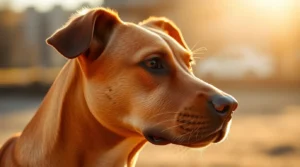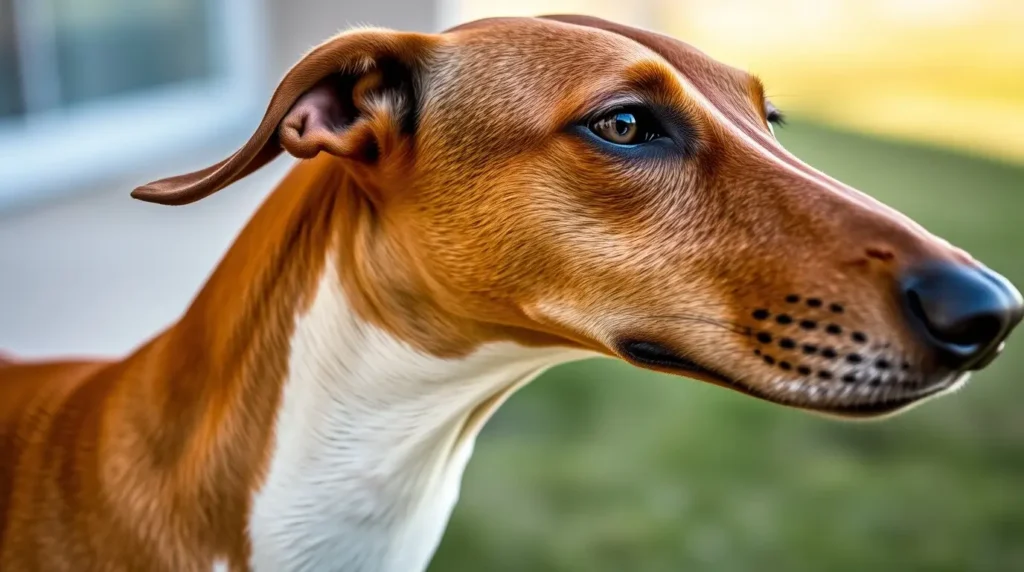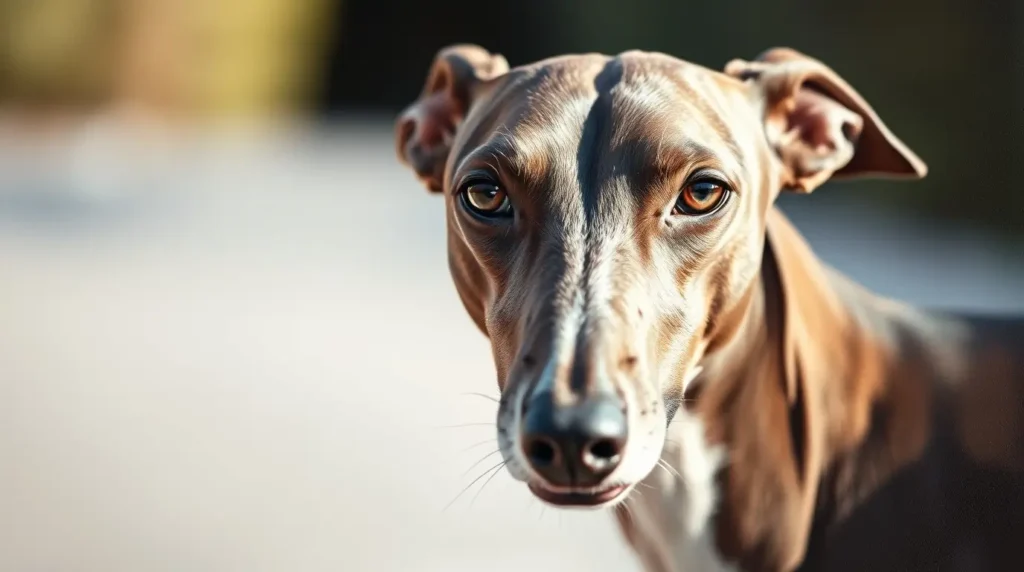Dogs come in all shapes and sizes, but have you ever wondered why some have long, narrow skulls while others have short, broad faces? If you’ve been searching for answers to What Are Dolichocephalic Dogs?, you’re not alone. At Whizpet, we conducted in-depth research to help dog lovers like you understand these unique breeds, their characteristics, and the challenges they face.
So, What Are Dolichocephalic Dogs? Simply put, they are dogs with elongated skulls and snouts, designed for superior vision and an enhanced sense of smell. Breeds like Greyhounds, Afghan Hounds, and Borzois fall into this category. But while their distinct head shape gives them incredible abilities, it also presents some health concerns.
Through expert insights and veterinary-backed studies, Whizpet’s research explores everything you need to know—from how these breeds compare to others to the common health risks they may face. If you’re curious to learn What Are Dolichocephalic Dogs? and whether one is right for you, keep reading to uncover three must-know secrets about these fascinating canines.

What Are Dolichocephalic Dogs?
Dolichocephalic dogs are breeds characterized by their long, narrow skulls and elongated muzzles. These dogs were historically bred for hunting, tracking, and endurance-based activities due to their excellent sight and sense of smell.
Key Characteristics of Dolichocephalic Dogs
What Are Dolichocephalic Dogs? They are breeds with long, narrow skulls and elongated snouts, specifically designed for speed, agility, and sharp sensory perception. Many of these dogs are sighthounds, meaning they rely on their keen vision to spot prey from a distance. Their superior sense of smell also makes them excellent hunting and tracking companions.
Common Traits of Dolichocephalic Dogs:
- Long and narrow skulls with an elongated snout.
- Keen eyesight—bred to detect movement over long distances.
- Superior sense of smell, aiding in tracking and hunting.
- Requires regular physical exercise and mental stimulation due to high energy levels.
Popular Dolichocephalic Dog Breeds:
- Greyhound – One of the fastest dog breeds, capable of reaching up to 45 mph.
- Afghan Hound – Recognized for its luxurious coat and incredible agility.
- Saluki – An ancient breed known for exceptional endurance.
- Borzoi – A Russian sighthound with a regal, aristocratic appearance.
- Collie – Famous for intelligence and strong herding instincts.
Compared to mesocephalic dog breeds (like Golden Retrievers) and brachycephalic dog breeds (like Bulldogs and Pugs), What Are Dolichocephalic Dogs? These breeds stand out for their longer skull structure, which enhances both vision and olfactory capabilities.
Secret #1: The Science Behind Their Skull Shape
What Are Dolichocephalic Dogs? They are breeds with elongated skulls that serve more than just an aesthetic purpose. This unique skull structure enhances their vision, speed, and sense of smell, making them exceptional hunters and racers.
How Their Skull Shape Benefits Them:
- Expanded nasal cavity → Stronger sense of smell (ideal for hunting dogs).
- Wide field of vision → Better peripheral vision for tracking moving objects.
- Aerodynamic head shape → Higher speed and agility, making them excellent racers.
However, while their skull structure gives them advantages, it also comes with potential health risks.
Health Issues in Dolichocephalic Dogs:
- Dental Crowding: Their long jaws often result in tightly packed teeth, leading to plaque buildup and gum disease.
- Sinus Problems: Their extended nasal passages make them more prone to sinus infections.
- Eye Conditions: Due to deep-set eyes, they are at risk for progressive retinal atrophy (PRA), which can lead to vision loss.
To keep these breeds healthy, owners must take extra care. What Are Dolichocephalic Dogs? They are dogs that require special attention to dental, nasal, and eye health to ensure a happy and active life.
Solutions:
- Regular dental cleanings and providing dental chews can prevent oral issues.
- Monitor nasal health, especially in dry climates, and use a humidifier if necessary.
- Routine eye check-ups can help detect early signs of PRA or other vision-related issues.
Secret #2: Dolichocephalic vs. Brachycephalic Dogs – A Key Comparison
One of the biggest distinctions among dog breeds is between dolichocephalic and brachycephalic dogs. If you’ve ever wondered, What Are Dolichocephalic Dogs?, understanding how they compare to brachycephalic breeds is essential. Their skull shape affects everything from health and vision to energy levels and exercise needs.
Key Differences Between Dolichocephalic and Brachycephalic Dogs
| Feature | Dolichocephalic Dogs | Brachycephalic Dogs |
| Skull Shape | Long, narrow snout | Short, wide snout |
| Common Breeds | Greyhound, Borzoi, Saluki | Bulldog, Pug, Shih Tzu |
| Health Issues | Dental problems, sinus issues | Breathing problems, overheating |
| Vision | Wide field of vision | Limited vision due to compressed skull |
| Energy Levels | High-energy, needs exercise | Moderate, often struggle with intense activity |
Which Dog Type is Best for You?
- Choose a Dolichocephalic Breed if: You love an active, agile, and independent dog that enjoys running and tracking.
- Choose a Brachycephalic Breed if: You prefer a low-energy, affectionate companion suited for apartment living.
So, What Are Dolichocephalic Dogs? They are athletic, sharp-sensed, and built for endurance, making them ideal for owners who lead an active lifestyle.
Secret #3: Common Problems Dolichocephalic Dog Owners Face & Their Solutions
If you’re considering adopting a dolichocephalic breed, it’s important to understand their unique challenges. Many new owners ask, What Are Dolichocephalic Dogs? and what kind of care they require. While their long skull shape gives them distinct advantages, it also comes with specific health and lifestyle concerns. Here are some common problems dolichocephalic dog owners face and how to solve them.
1. Dental Issues Due to Overcrowding
- Problem: Dolichocephalic dogs often develop tooth misalignment and gum disease due to crowded teeth in their long snouts.
- Solution:
- Brush their teeth regularly using a vet-approved dog toothpaste.
- Provide dental chews to reduce plaque buildup.
- Schedule routine dental checkups with a veterinarian.
2. Increased Risk of Eye Conditions
- Problem: Their deep-set eyes make them more vulnerable to injuries and progressive retinal atrophy (PRA), a degenerative eye disease.
- Solution:
- Use dog goggles for outdoor adventures to protect their eyes from debris.
- Keep their living environment clean to reduce infection risks.
- Schedule routine eye exams to catch any issues early.
3. Nasal and Sinus Issues
- Problem: Their elongated nasal passages can lead to sinus infections and breathing difficulties in dry or polluted environments.
- Solution:
- Keep their environment humidified, especially in colder months.
- Use vet-approved saline nasal drops to keep their nasal passages clear.
- Monitor for excessive sneezing or nasal discharge and consult a vet if symptoms persist.
4. High Energy Needs
- Problem: Dolichocephalic breeds are high-energy dogs, and without enough exercise, they can develop destructive behaviors.
- Solution:
- Engage them in daily long walks, running, or hiking.
- Provide mental stimulation through puzzle toys and obedience training.
- Consider dog sports like lure coursing or agility training.
5. Sensitivity to Cold Weather
- Problem: Many dolichocephalic breeds have thin coats, making them prone to cold intolerance.
- Solution:
- Use dog sweaters or jackets during chilly weather.
- Limit outdoor exposure in freezing temperatures.
- Provide warm bedding indoors to keep them comfortable.
By addressing these challenges, you can ensure your dolichocephalic dog stays happy and healthy. What Are Dolichocephalic Dogs? They are unique, athletic companions that thrive with the right care and lifestyle adjustments.
The Hidden Advantages of Dolichocephalic Dogs: Speed, Endurance, and Agility
When people ask, What Are Dolichocephalic Dogs? they often focus on their elongated skulls, but these breeds are also celebrated for their exceptional speed, agility, and endurance. Their streamlined head shape reduces air resistance, allowing them to move faster and with greater efficiency. In fact, the Greyhound, one of the most well-known dolichocephalic breeds, can reach speeds of up to 45 mph, making it the second-fastest land animal after the cheetah.
Additionally, their long nasal passages don’t just enhance their sense of smell—they also play a crucial role in cooling the air they breathe, helping them maintain stamina during long-distance running. Historically, many dolichocephalic breeds were used for hunting, herding, and coursing, thanks to their ability to track prey over vast distances. Today, they continue to excel in sports like lure coursing and competitive racing.
However, while their slender skull and deep chest provide performance advantages, these traits also require specialized care. Dolichocephalic breeds need joint protection, proper warm-ups before exercise, and a well-balanced diet to support their lean muscle mass. Understanding these unique aspects of What Are Dolichocephalic Dogs? can help owners provide optimal care for these high-energy, athletic companions.

Frequently Asked Questions (FAQs)
1. Are dolichocephalic dogs dangerous?
No, dolichocephalic dogs are not dangerous. However, their high energy and hunting instincts require proper training and socialization.
2. What are dolichocephalic dogs called in different regions?
They are often called sighthounds due to their strong vision and tracking abilities.
3. How do dolichocephalic dogs compare to mesocephalic breeds?
Mesocephalic dogs have a balanced skull shape (like Labradors), while dolichocephalic dogs have elongated skulls for hunting and tracking.
4. Do dolichocephalic dogs need special diets?
They benefit from high-protein, nutrient-rich diets that support their active lifestyle and dental health.
5. Can dolichocephalic dogs live in apartments?
While possible, they thrive in open spaces with plenty of room to run. If living in an apartment, they need daily exercise.
Final Thoughts – Is a Dolichocephalic Dog Right for You?
Now that you know What are dolichocephalic dogs?, their unique traits, health risks, and how they compare to other breeds, you can decide if they’re the right fit for your lifestyle.
- Choose a Dolichocephalic Dog If:
- You enjoy an active, outdoor lifestyle.
- You can commit to regular exercise and mental stimulation.
- You don’t mind extra dental and eye care.
- Avoid a Dolichocephalic Dog If:
- You want a low-energy, apartment-friendly dog.
- You’re not prepared for high exercise needs.
- You prefer a breed with minimal grooming and care requirements.
Thinking About Adopting a Dolichocephalic Breed?
Visit a local rescue or reputable breeder to meet these incredible dogs in person. Your perfect canine companion might be waiting for you!
Related blog: For more detailed information about pet care

